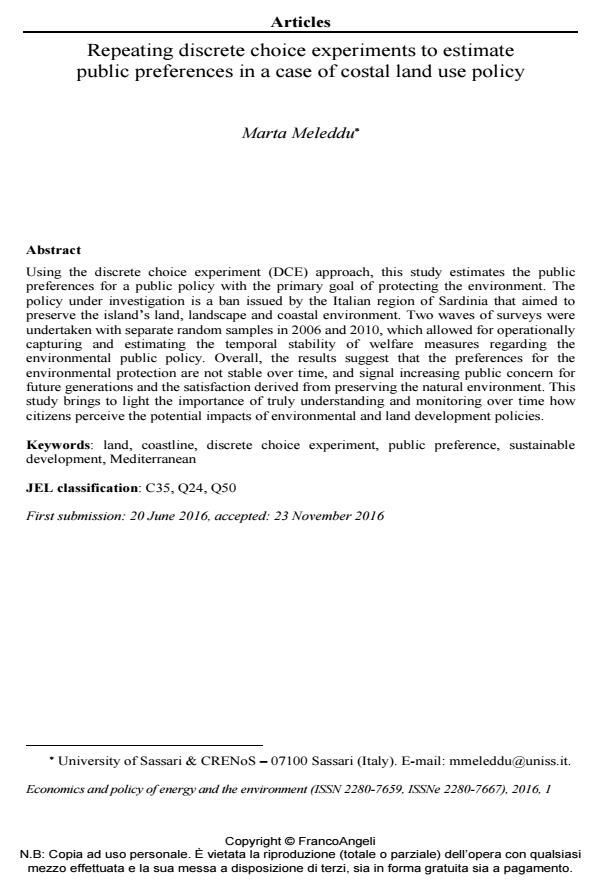Repeating discrete choice experiments to estimate public preferences in a case of costal land use policy
Journal title ECONOMICS AND POLICY OF ENERGY AND THE ENVIRONMENT
Author/s Marta Meleddu
Publishing Year 2017 Issue 2016/1
Language English Pages 26 P. 47-72 File size 966 KB
DOI 10.3280/EFE2016-001003
DOI is like a bar code for intellectual property: to have more infomation
click here
Below, you can see the article first page
If you want to buy this article in PDF format, you can do it, following the instructions to buy download credits

FrancoAngeli is member of Publishers International Linking Association, Inc (PILA), a not-for-profit association which run the CrossRef service enabling links to and from online scholarly content.
Using the discrete choice experiment (DCE) approach, this study estimates the public preferences for a public policy with the primary goal of protecting the environment. The policy under investigation is a ban issued by the Italian region of Sardinia that aimed to preserve the island’s land, landscape and coastal environment. Two waves of surveys were undertaken with separate random samples in 2006 and 2010, which allowed for operationally capturing and estimating the temporal stability of welfare measures regarding the environmental public policy. Overall, the results suggest that the preferences for the environmental protection are not stable over time, and signal increasing public concern for future generations and the satisfaction derived from preserving the natural environment. This study brings to light the importance of truly understanding and monitoring over time how citizens perceive the potential impacts of environmental and land development policies.
Keywords: Land, coastline, discrete choice experiment, public preference, sustainable development, Mediterranean
Marta Meleddu, Repeating discrete choice experiments to estimate public preferences in a case of costal land use policy in "ECONOMICS AND POLICY OF ENERGY AND THE ENVIRONMENT" 1/2016, pp 47-72, DOI: 10.3280/EFE2016-001003